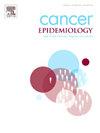胆道癌患者的预后与治疗方案有关:全国性数据库研究
IF 2.4
3区 医学
Q3 ONCOLOGY
引用次数: 0
摘要
背景胆道癌(BTC)是一种恶性肿瘤,其特点是 5 年生存率低(20%)。临床方面,如肿瘤可切除性、东部合作肿瘤学组(Eastern Cooperative Oncology Group)表现状态评分(ECOG-PS)和分子图谱分析被用来决定这些患者的治疗方法。诊断和治疗通常由多学科团队(MDT)确定。然而,目前还缺乏针对 BTC 的标准化实践,因此有必要评估当前 MDT 治疗决策对 BTC 治疗结果的影响。这项研究的目的是调查首次多学科小组会议提出的治疗方案对 BTC 患者生存率的影响,并确定该人群生存率低的风险因素。这项全国性、多中心、回顾性队列研究检查了丹麦肝癌组(2013-2020 年)确诊为 BTC 的数据。采用多重估算法处理缺失数据。分别使用 Kaplan-Meier 估计器和 Cox 回归模型分析了生存率和变量与生存率之间的关系。总生存期中位数为 7.7 个月(95 % CI:7.1-8.5),5 年生存率为 16.3%。年龄超过 70 岁、ECOG-PS 3 或 4、无法手术以及肿瘤无法切除的患者生存率较低。手术作为第一治疗方案的中位生存期最高(33.1 个月,95 % CI:27.2-41.6;p < 0.0001)。多变量分析显示,ECOG-PS差、姑息化疗和新辅助化疗、立体定向放疗和最佳支持治疗会显著增加BTC患者的死亡风险(P=0.05)。ECOG-PS高与死亡率风险增加有关,与年龄无关,这凸显了这一标准在治疗决策中的重要性。本文章由计算机程序翻译,如有差异,请以英文原文为准。
Prognosis related to treatment plan in patients with biliary tract cancer: A nationwide database study
Background
Biliary tract cancer (BTC) is a malignancy characterized by a low 5-year survival rate (<20 %). Clinical aspects such as tumor resectability, Eastern Cooperative Oncology Group performance status score (ECOG-PS), and molecular profiling are used to determine the treatment for these patients. Diagnosis and treatment are typically established by a multidisciplinary team (MDT). However, standardized practices for BTC are lacking, and there is a need to assess the impact of current MDT treatment decisions on BTC outcomes. The purpose of this study was to investigate the role of the treatment plan proposed by the first MDT conference on survival in patients with BTC, and to identify risk factors for poor survival in this population.
Method
This nationwide, multicenter, retrospective cohort study examined data from the Danish Liver Cancer Group (2013–2020) with confirmed BTC diagnoses. Multiple imputation was used to handle missing data. Survival and variable-survival rate relationships were analyzed using the Kaplan-Meier estimator, and the Cox regression model, respectively.
Results
Eligible BTC-confirmed cases: n=1923. The overall median survival was 7.7 months (95 % CI: 7.1–8.5), with a 5-year survival rate of 16.3 %. Patients over 70 years of age, with ECOG-PS 3 or 4, non-operable cases, and with unresectable tumors had lower survival rates. Surgery as the first therapeutic option showed the highest median survival (33.1 months, 95 % CI: 27.2–41.6; p < 0.0001). Multivariable analysis showed that poor ECOG-PS, palliative and neoadjuvant chemotherapy, stereotactic radiotherapy, and best supportive care significantly increased mortality risk in patients with BTC (p=0.05).
Conclusion
Among the therapeutic options prescribed by the MDT for patients with BTC, surgery offered the best survival rates, likely due to patient-related prognostic factors. High ECOG-PS was linked to an increased mortality risk regardless of age, highlighting the importance of this criterion in treatment decisions.
求助全文
通过发布文献求助,成功后即可免费获取论文全文。
去求助
来源期刊

Cancer Epidemiology
医学-肿瘤学
CiteScore
4.50
自引率
3.80%
发文量
200
审稿时长
39 days
期刊介绍:
Cancer Epidemiology is dedicated to increasing understanding about cancer causes, prevention and control. The scope of the journal embraces all aspects of cancer epidemiology including:
• Descriptive epidemiology
• Studies of risk factors for disease initiation, development and prognosis
• Screening and early detection
• Prevention and control
• Methodological issues
The journal publishes original research articles (full length and short reports), systematic reviews and meta-analyses, editorials, commentaries and letters to the editor commenting on previously published research.
 求助内容:
求助内容: 应助结果提醒方式:
应助结果提醒方式:


